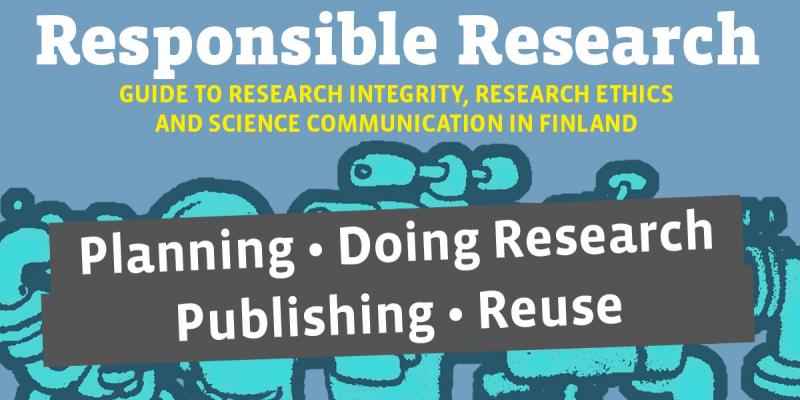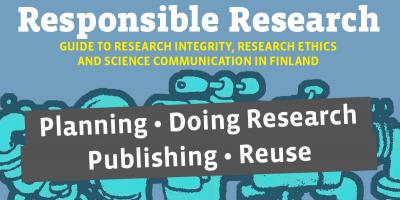Predatory publishers charge a fee from authors but fail to perform the duties of an academic publisher.
After attending a conference, did you receive an e-mail asking for a submission in a new, top journal? Was your manuscript accepted with no changes only a few days after you submitted it? Did you read a research article presenting a way of curing all known forms of cancer? If this sounds familiar, you have encountered the predators of the publishing world.
The term “predatory open access” has been used for publishers and journals that fail to comply with practices of responsible conduct of research and abuse new publishing models. These “predatory publishers” charge a fee from authors but fail to perform the duties of an academic publisher, such as carrying out peer review or archiving past issues. In other words, everything that is paid for is published irrespective of the authenticity or accuracy of the findings. Predators are found among book and journal publishers, conference organisers and research metrics services, but this article mainly concerns journals.
Predators are found among book and journal publishers, conference organisers and research metrics services.
Open science has revolutionised the field of scholarly publishing. Instead of financing their operations from subscription fees, open access journals, i.e. those that are available online and free of charge, generally generate income from fees charged to the authors, known as article processing charges (APCs). The costs of editing the journal are passed on from readers, or in practice from academic libraries that subscribe to scholarly literature, to authors. This business model has given rise to a number of unscrupulous actors interested in easy money. In practice, setting up this kind of “publication” or a fake conference does not require anything other than a website and an e-mail address from a free service provider. The costs are minimal, possibly non-existent, so the threshold for fraudsters is low.
At the moment, there is not that much research on this phenomenon. However, it would appear that the number of “predatory journals” and the number of articles they produce has multiplied in the space of a few years.
There are many different kinds of questionable practices. Some journals may operate in a grey area, for example, publishing controversial articles irrespective of peer comments recommending that they be rejected. Some may invite referees from entirely wrong fields. There are even cases in which the journal’s editorial board is made up of imaginary people or where the names of real people have been added to the editorial board without their knowledge or despite their refusal. The content of the publications may be partly or entirely plagiarised, because there is no quality assessment.
If there is some kind of review process, the comments received by the author may be so general that they could apply to any kind of text. If the peer review process is carried out anonymously, the reviewer might be anybody, even the founder of the journal, a student, a layperson or a robot.
Career development and the credibility of science hanging in the balance
The most important research funders in Finland and in the world require or at least recommend open publication of research findings, so there is a demand for open access publication channels. Many researchers also want to publish in such channels, for reasons of principle, where research findings are accessible free of charge by everyone interested in them.
A typical feature of “predatory publishers” is aggressive e-mail marketing, with the aim of attracting researchers as authors, members of editorial boards or as reviewers. Publishing in these kinds of journals may seem like a good idea at first. The journals promise that a decision to publish will be made quickly, even within a few days, article processing charges are typically lower than in other journals and the channel meets the requirements of openness set by funders. Often the fraudsters also promise too much regarding their own journal. The journal’s website may show logos of well-known indexing databases and companies, bogus impact factors and advertising statements praising the journal.
So what harm is there in publishing in these kinds of journals? Firstly, applying inaccurate research findings, for example in the healthcare sector, may pose a risk to patients’ health. At the same time, they weaken the confidence of the general public and decision-makers in science. In addition, it may come as a surprise to the author that a fee is charged for publication. The fee is not necessarily mentioned in advance or the terms may be unclear. If the author wishes to take their article back, the publisher may refuse, so the author can no longer offer their research findings to another academic journal. As part of an article dissertation, a piece of research published in a “predatory journal” may have a negative effect on the whole dissertation process.
The researcher’s own reputation may also hang in the balance. Their judgment may be questioned or publishing in a dubious journal may be seen as the researcher’s deliberate choice, made in order to circumvent peer review and get a publication that seemingly meets academic criteria on their CV. Rather than losing the article fee, a more serious consequence may be placing your career development at risk.
When is it wise to be suspicious?
The scope of a “predatory journal” is often very broad. The aim here is to attract as many articles as possible. The name may be something like “International Journal of Science, Technology & Education Research” or “Journal of Nature and Science”. The journals also favour abbreviations, which may be intended to give the impression of being official. “Predatory journals” often list various indexing services in which their publication is included. It is always worth checking the original source to see whether this is actually true.
There are various databases available to assist in choosing a reliable publication channel.
There are various databases available to assist in choosing a reliable publication channel. These databases require that the journals they index apply peer review. These include the Directory of Open Access Journals (DOAJ), Web of Science, Scopus, Medline, ERIH PLUS and the Norwegian, Danish and Finnish publication channel classifications (Publication Forum in Finland). Examining several different sources side by side provides the most reliable result. If, for example, the journal is indexed in the Web of Science, the DOAJ and Scopus, and is on level 2 in the Publication Forum classification, it is probably a credible publication channel.
Many people have used “Beall’s List”, a website put together by librarian Jeffrey Beall of the University of Colorado, Denver, to help sift through suspicious journals and publishers. However, the list was suddenly taken down in January 2017. Beall’s criteria can nevertheless still be used to identify the bad apples. In addition to the features mentioned above, there are grounds to be wary if:
On the editorial board of the journal
- the same person is the editor-in-chief of all the publisher’s journals
- the names of the editor-in-chief and the editorial board and/or the organisation are not stated
- the name of the journal indicates that it is international but the editorial board is local
In business operations
- publication activity is not transparent
- the archiving of the articles is not assured, so all the content will disappear if the website disappears
- the publisher launches a large number of journals at the same time
- the publisher does not openly provide information about the fees that authors are charged
- the publisher prevents search engines from crawling its contents
In terms of honesty
- the name of the journal is misleading, e.g. in terms of geography or content
- the name is the same or similar to another existing academic journal
- the publisher takes insufficient action to prevent misconduct, such as plagiarism
Miscellaneous
- the website of the publication channel is of poor quality (lots of ads, spelling mistakes, poor-quality images and logos)
- the target group and scope are broad and vaguely defined
- the channel publishes texts previously published elsewhere without stating the original source
- the manuscripts have not been proofread or edited before publication
- the channel publishes pieces by laypeople, polemic editorials or pseudoscience
- the publisher does not reveal contact details other than a general e-mail address or feedback form
- the publisher does not state their physical location
Hijacked journals are in a class of their own. Identifying them can be almost impossible because the issue is one of identity theft. The fraudster can hijack the domain of an established academic journal if the publisher forgets to renew a domain previously registered under their own name when the registration expires. An unsuspecting user may enter logins or credit card details on the site, which then fall into the hands of the hijackers.
Of course, these problems do not only affect open access publishing. It is also worth remembering that not all open access journals charge article processing charges, and secondly that charging fees does not in itself make the publisher dishonest.
No list or database can be kept up to date in rapidly changing circumstances so it is particularly important to familiarise oneself with publication channels and critically assess their content. The updated recommendations of the International Committee of Medical Journal Editors even state that authors have a responsibility to evaluate the integrity, history, practices and reputation of the journals to which they submit manuscripts. Your own organisation’s library can provide help in choosing a suitable publication channel and of course it is worth asking the opinion of your colleagues too.
The following sources can be used when assessing journals and publishers:
- Committee on Publication Ethics (COPE)
- Directory of Open Access Journals
- International Committee of Medical Journal Editors (ICMJE): Recommendations for the Conduct, Reporting, Editing, and Publication of Scholarly work in Medical Journals
- Open Access Scholarly Publishers Association (OASPA)
- Think, check, submit
Anna-Sofia Ruth, Information Specialist at Tampere University Library. Coordinator for Publication Forum at the Federation of Finnish Learned Societies 2014–2017.
Further information:
Beall, Jeffrey (2012). Predatory publishers are corrupting open access. Nature 489: 179. http://dx.doi.org/10.1038/489179a
Bohannon, John (2013). Who’s afraid of peer review? Science 342, 60–65. http://dx.doi.org/10.1126/science.342.6154.60
Bohannon, John (2015). Feature: How to hijack a journal. Science, November 19. http://dx.doi.org/10.1126/science.aad7463
Butler, Declan (2013). Investigating journals: The dark side of publishing. Nature 495, 433–435. http://dx.doi.org/HYPERLINK "http://dx.doi.org/10.1038/495433a"10.1038/495433a
Butler, Declan (2013). Sham journals scam authors. Nature 495, 421–422. http://dx.doi.org/10.1038/495421a
Laakso, Mikael & Kere, Juha (2015). Tieteellisen julkaisemisen muutokset – kasvukipuja ja avoimuuden haasteita. Tieteessä tapahtuu journal 33: 3, 16–19. http://journal.fi/tt/article/view/50770
Mehrpour, Saeed & Khajavi, Yaser (2014). How to spot fake open access journals. Learned Publishing 27, 269–274. http://dx.doi.org/10.1087/20140405
Pincock, Stephen (2013). Publishing: Open to possibilities. Nature 495, 539–541. http://dx.doi.org/10.1038/nj7442-539a
Shen, Cenyu & Björk, Bo-Christer (2015). ‘Predatory’ open access: a longitudinal study of article volumes and market characteristics. BMC Medicine 13: 230. http://dx.doi.org/10.1186/s12916-015-0469-2
Singh Chawla, Dalmeet (2017). Mystery as controversial list of predatory publishers disappears. Science, January 17. http://dx.doi.org/10.1126/science.aal0625
You might also be interested in
Tämä teos on lisensoitu Creative Commons Nimeä 4.0 Kansainvälinen -lisenssillä. Detta verk är licensierat under en Creative Commons Erkännande 4.0 Licens. This work is licensed under a Creative Commons Attribution 4.0 International license.

